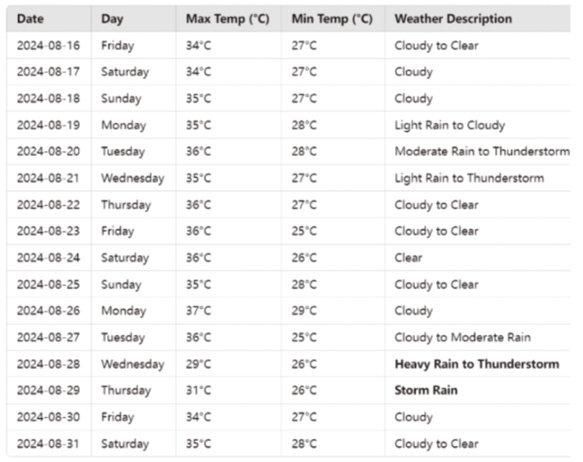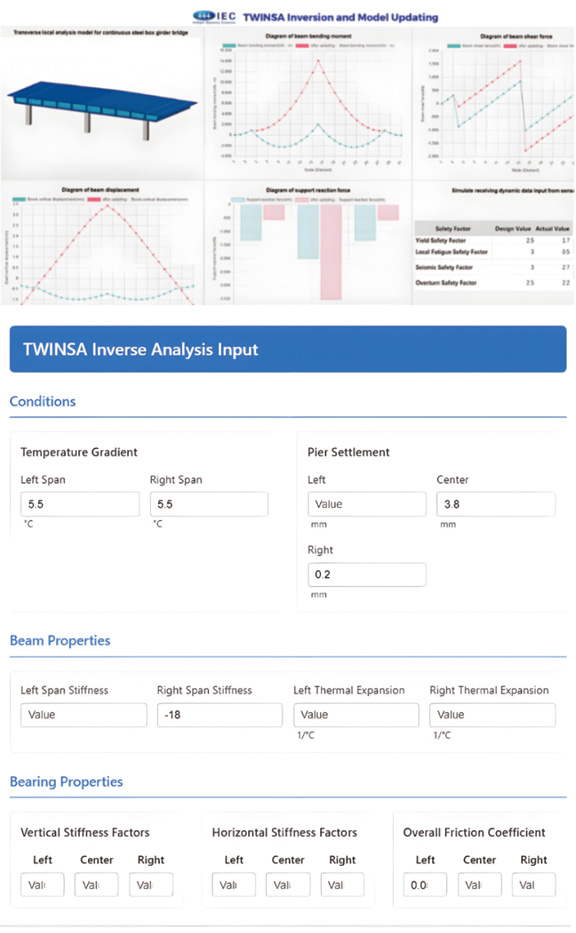
TWINSA
Case Study
Cause: Temperature gradient and push-up effect
Sun exposure creates a temperature difference between the top and bottom surfaces of the bridge, resulting in a temperature gradient. This induces additional bending moments due to differential thermal expansion and contraction across the beam’s cross-section, causing the beam to arch and creating a "push-up" effect, where the beam’s edges bear more load while the center experiences less.
At 4 PM, when the temperature gradient peaks, the side bearings (both left and right bearings of each pier) carry more load, while the center bearing bears less.
The combined load on the bearings of the side piers is highest, while the load on the center piers is lowest.
By 7 AM, the temperature difference is minimal, the load distribution is the opposite of the 4 PM condition.
On August 28th and 29th, thunderstorms and heavy rain minimized the temperature gradient, keeping the side bearings at their lowest.
TWINSA Insights
Through TWINSA, we have identified key phenomena validated by precise measurement data. By moving beyond theoretical assumptions, these measurements allow us to compute critical structural parameters, such as beam stiffness and the thermal expansion coefficient, ensuring a reliable foundation for refining the structural model for accuracy.

Weather history of the location

Temperature Monitoring Data

TWINSA inverse Analysis with FEA API










